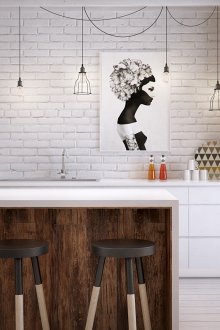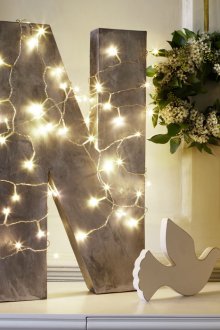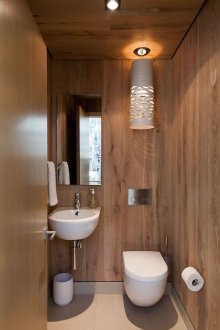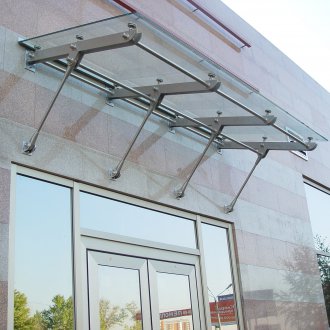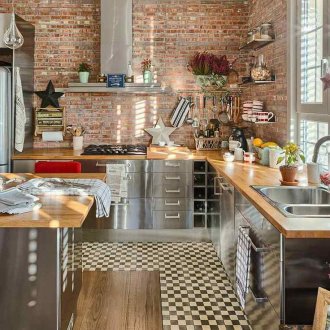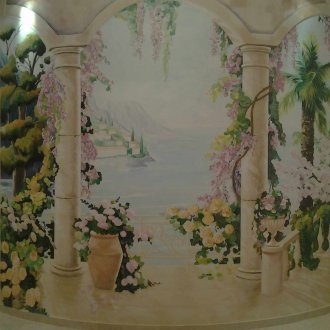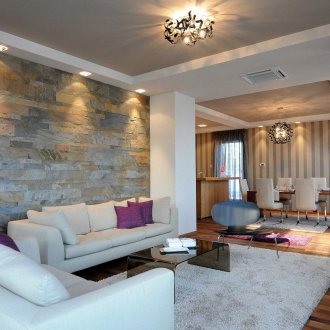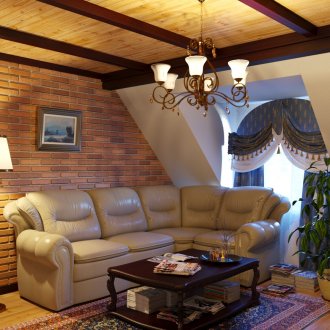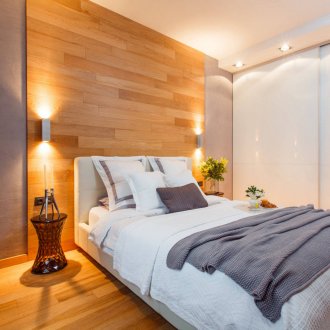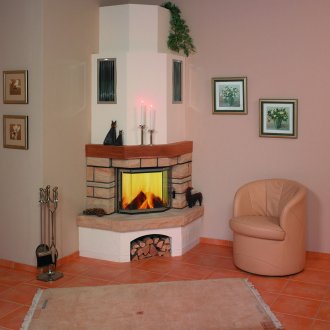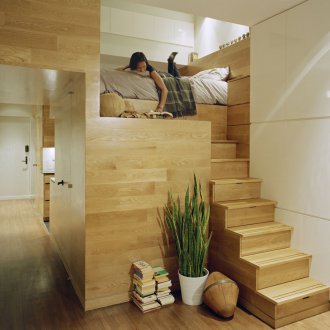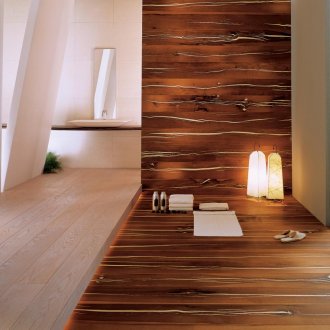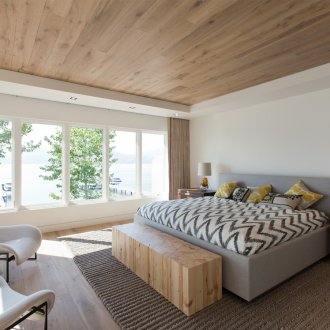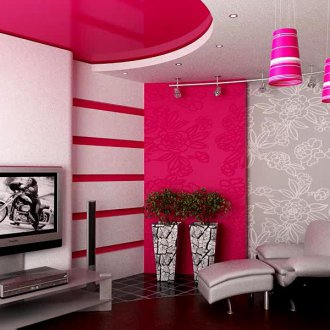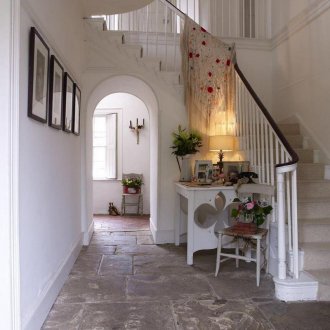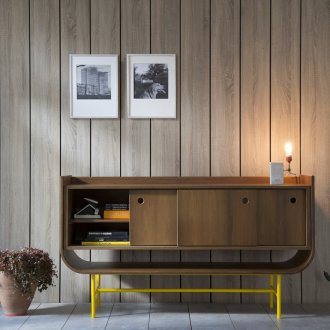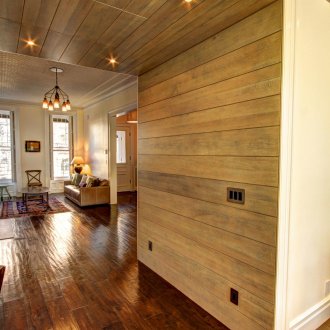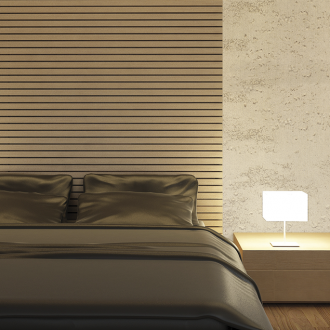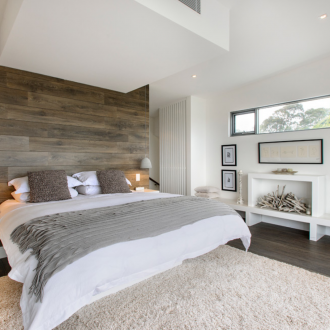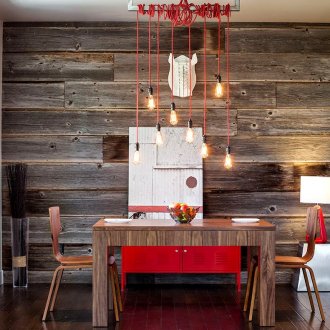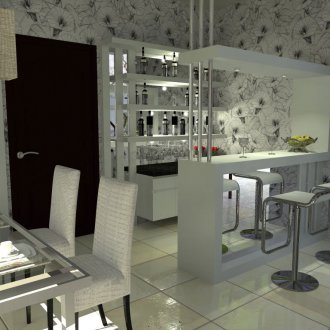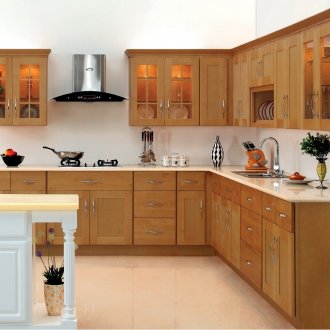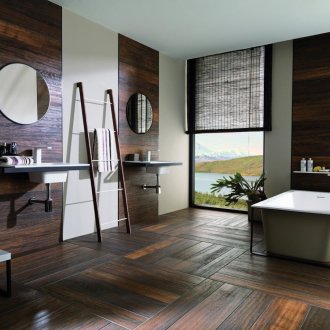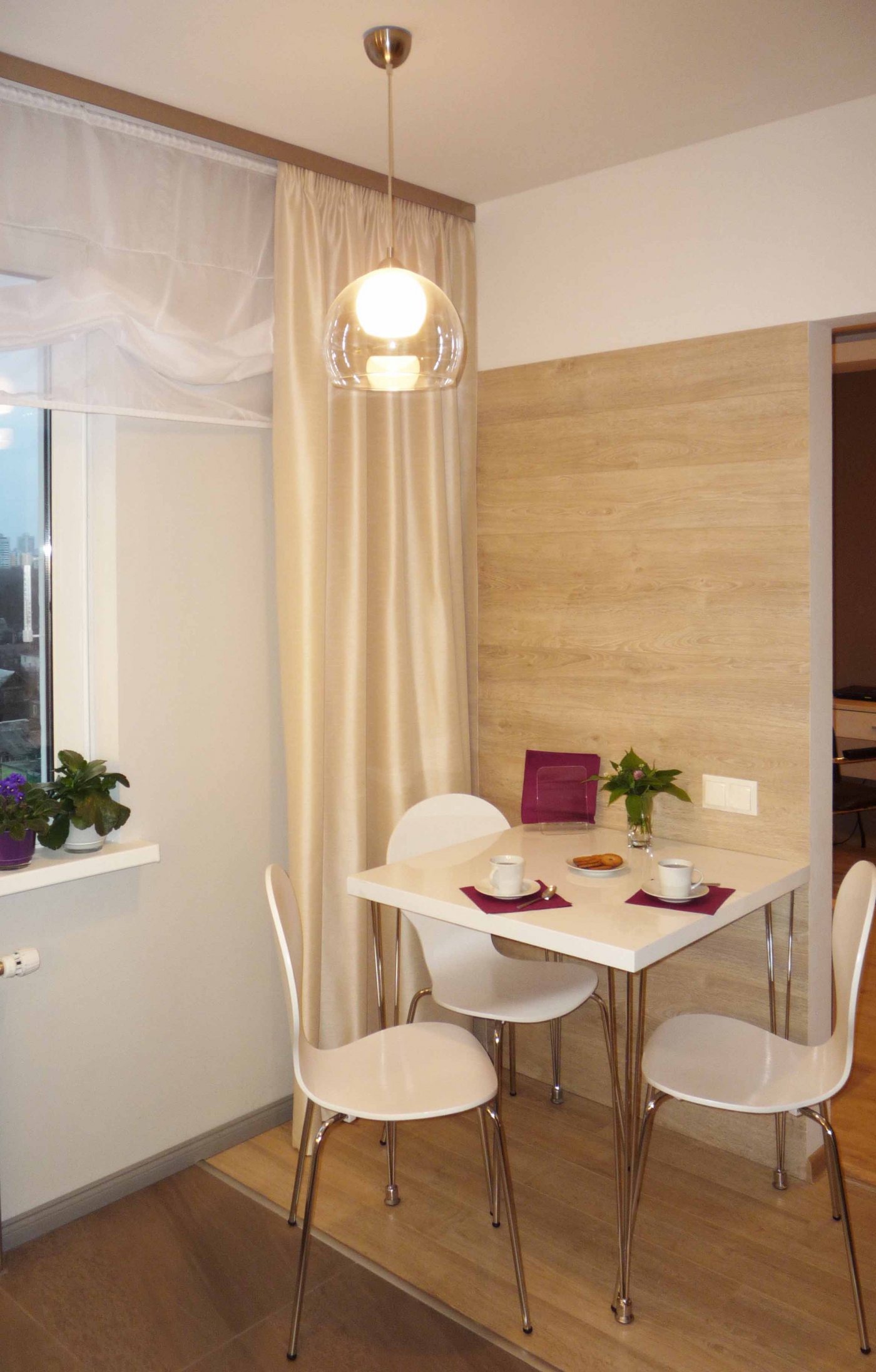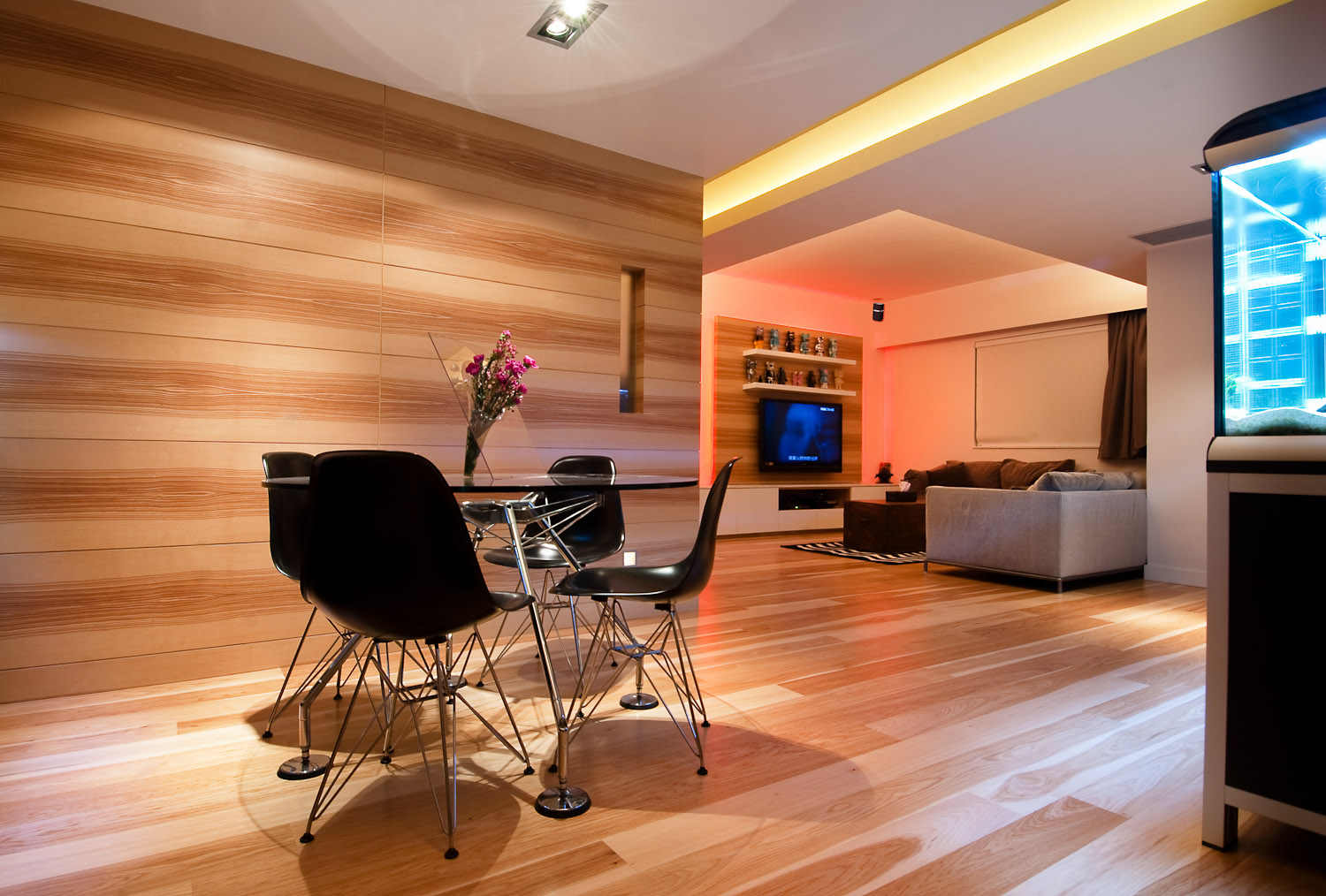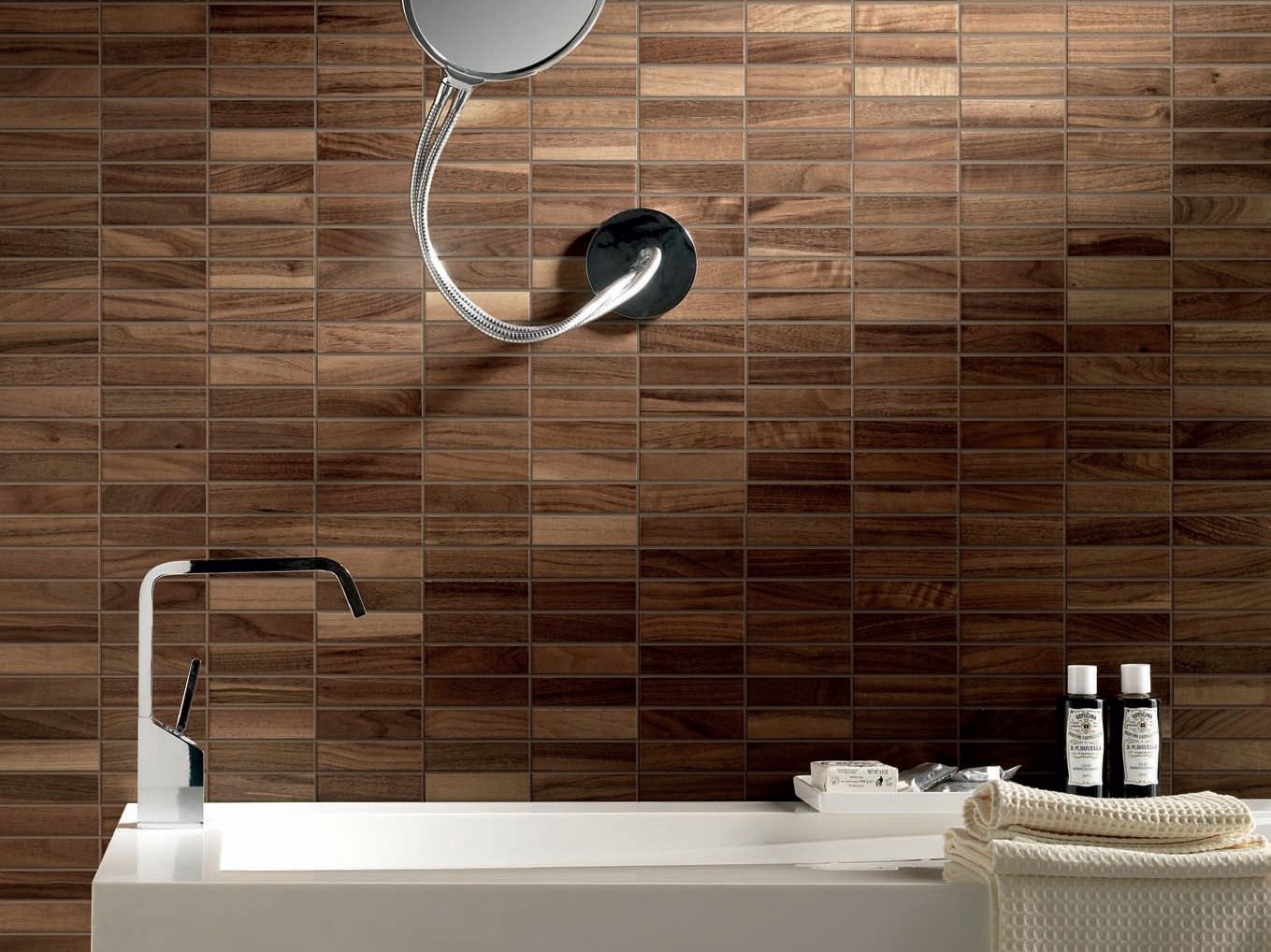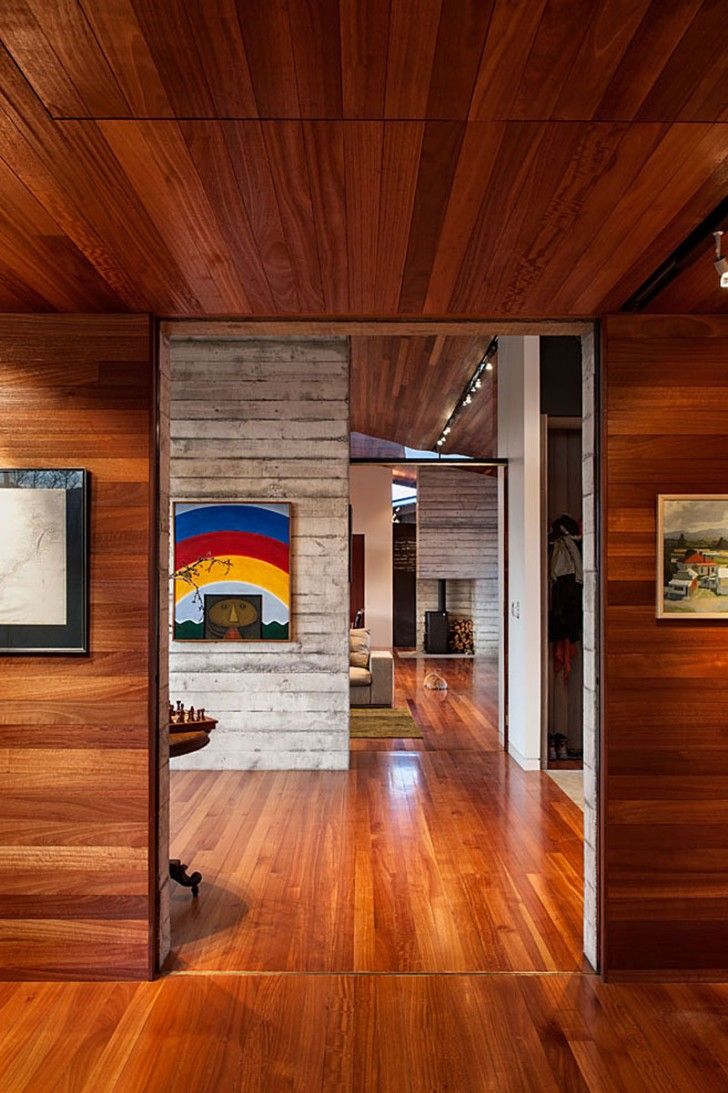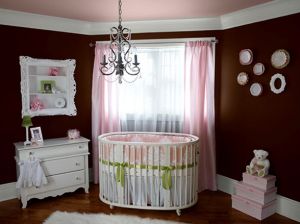Laminate on the wall in the home decor: a look in a new plane (27 photos)
Content
Laminate on the wall in the interior is a practical and stylish finish that creates cosiness in the room. There are several mounting methods, but the most practical two are installation on a crate and on glue.
Material benefits
Laying the laminate on the wall is done without any difficulties, this requires only a special tool and extra hands. The aesthetics of the design using such surfaces has a high degree, they are often used to highlight individual areas in the room in order to give a special mood.
Laminate is considered an expensive and high-quality product, its installation on the wall is an expensive pleasure. Finishing made of particle board is mainly used with wood print, although stone-like and other natural materials are possible.
In any case, a room with a zone imitating natural material and containing wood as the main component will have an unusual design and carry the atmosphere that natural elements usually give to a design with their presence in the interior. Plastic panels, of course, differ in this regard by their unnatural gloss and sufficient cheapness.
Lining the walls with a laminate is quite whimsical to use and has less practicality than wallpaper or painting walls, so it is worth finishing the laminate with rooms in which there will be the least wear for it: in the living room, in the bedroom, in the nursery, in the hallway.
It is not recommended to decorate with this material a bathroom, other wet rooms and a kitchen in areas where steam from cooking gets.
Which mounting method to choose?
The method of attaching the laminate to the wall can be vertical or horizontal. To choose the right one, you need to know the pros and cons of both methods.
The vertical way to attach the laminate is the easiest and is suitable for beginners. It does not require the use of various tricks, like the ability to correctly insert side plinths or trim the remaining laminate in the corners. Everything is extremely simple here, especially since some types of laminate panels are three meters - just enough to cover the wall from floor to ceiling.
You can make it yourself or buy ready also a shortened version - these are small segments of the laminate, lamellas, which can be installed in different sequences. This method carries a variety of possible playing out decor from several shades of laminate. A little imagination is enough, and you can come up with a unique design.
For example, wall decoration with laminate in the hallway may look like a combination of light and dark colors - a bold decision, which, however, is quite appropriate for such a room.
The light laminate can be placed above and below, and the middle can be saturated with dark to achieve a special contrast. And if you apply the technique of small laminate blocks of different lengths (which you can do yourself by simply cutting the existing standard sheet), you get the effect of a curved fence, which will be appropriate in the hallway, made in a country style with a lot of rattan furniture and flowers in pots .
Lining the walls with a laminate using horizontal laying is more practical.If you want it to look interesting, apply various installation options for individual panels: a ladder, a checkerboard pattern and more. This approach requires professionalism. When the finished work is done professionally, it looks like a worthy stylish option with an interesting texture.
Preparing for fasteners
To lay the laminate on the wall, you need a flat surface. On smooth walls without plaster, the material should be laid directly on it and fixed with liquid nails. This is the easiest option with maximum time and effort savings. The method is useful if you live in an apartment (where the walls are a priori straight), and you wanted to make an express repair. How to fix the laminate on the wall in order to refresh, for example, the most frequently visited room - the kitchen, hallway or living room? To do this, remove any coatings from the base surface of the wall. Then clean and dry it, and only then proceed with finishing.
So, in order to beat the design of the kitchen in the most profitable way, you should establish the woody motives of the laminate - this will visually make the room more welcoming, because the tree has a cozy and warm conversation. If, at the same time, we distinguish between zones by completing a working area with a stove in a tile and a dining area in a tree, we can use the kitchen multifunctionally, including as a full dining room, and even a chamber living room.
With the adhesive method, it is necessary to dry the walls well. The best base material is drywall. Dry and even, drywall will add strength and construction to the safe use of walls. We must not forget about the severity of the laminate tapes - the material may not withstand the load and collapse under its own weight if the base was not adequately prepared and leveled.
But the most frequent and most reliable way is to pre-mount the crate, on which the laminate is mounted on the wall. In this case, the greatest reliability of the finished structure and the ability to add insulation or sound insulation to the opening between the wall and the laminate sheets are achieved.
We fix the laminate on the wall
The fixing of the laminate on the wall with the help of the lathing begins with the fastening of the rails at a distance of 60 cm from each other. If the design is conceived in the performance of a horizontally laid laminate, then the crate is attached vertically. Conversely, with a vertical appearance, the slats should be laid perpendicular to the direction of the structure - horizontally. This installation provides the greatest strength, durability and eliminates deformation of the material in the future.
The order of fastening of the crate is as follows:
- First you need to make markings to evenly install the beam in the selected direction;
- each beam of which the crate will consist of must be at least 4 cm in order to support the weight of the product;
- using a drill, fix the crate according to the marking, at least every 50 cm;
- begin to lay the laminate on the wall.
Facing the walls with a laminate after choosing the direction and installing the lathing can be different and depends on the varieties of laminate lamellas. So there are lamellas with a tongue-and-groove lock “Click” or “Lock” or another type of joint between two lamellas. But any kind of lamellas is mounted with the help of clamps or directly with a thin nail directly to the bottom wall of the groove.
How to lay the laminate on the wall with glue in stages:
- removal of the old finish;
- leveling the wall, covering cracks;
- priming the wall;
- the connection of several lamellas with each other with glue ends before attaching to the wall;
- fastening lamellas to the wall from the corner to the middle with glue nails, which should be applied to both surfaces: both the wall and the laminate.
Thus, you can independently install all the elements. It is only necessary to remember that for a firm fixation of the structure, it must be properly treated with glue, and then strongly pressed against the wall and held for 15 minutes so that the surfaces adhere.
additional information
For walls, laminate strips of reduced strength are suitable - they, as a rule, are an order of magnitude cheaper than a strong and dense laminate, which is installed on the floor. For walls, the thickness can be more a minus than a plus, because under its own weight the material can be deformed.
For reliability of fastening, laminate strips should be sawn into several parts, so that the finished small beams have a lighter weight and better hold on the walls. To get an interesting texture of wood decor, you can use several shades of material and alternate them during installation.
Laminate is not resistant to moisture. When the temperature in a room with a laminate is constantly changing, there is a source of humidity or steam, it will deteriorate. This is accompanied by bloating at the joints of two tapes. Therefore, the decoration of the walls with laminate in the kitchen or on the loggia should be in those areas where these factors are not present or they are minimal.
